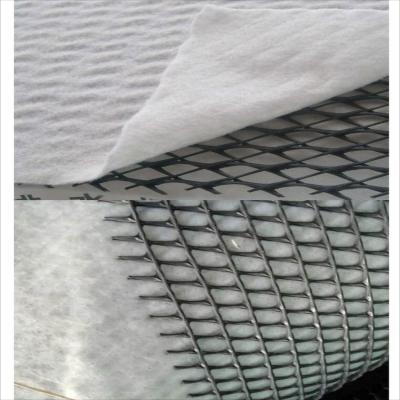Three dimensional composite drainage network It has the advantages of high pressure resistance, high opening density, all-round water collection and horizontal drainage functions. It can be used in landfill drainage, roadbed tunnel lining, railways, highways and other transportation infrastructure projects. So, its correct laying What are the methods?
1. Material preparation and inspection
three-dimensional Composite drainage network Is composed of a plastic net with a three-dimensional structure and double-sided adhesive water-permeable geotextile. Before laying, check the quality of the material to ensure that it is not damaged, contaminated and meets the design requirements. According to the engineering requirements, select the appropriate mesh core thickness (such as 5 mm、6mm、7mm Etc.) and geotextile weight (usually 200 grams).
2. Construction site preparation
1、Site cleaning: Thoroughly clean the site to be constructed to ensure that there are no floating soil, stones, sharp objects, etc., so as not to damage the drainage net.
2、Site leveling: The site should be smooth and solid to avoid distortion or folding of drainage net due to uneven ground Stack.
3. Laying direction adjustment
When laying a three-dimensional composite drainage network, it is necessary to adjust its direction so that the length direction of the material roll is perpendicular to the main axis of the road or engineering structure. It helps the drainage network to better perform its drainage function, and can also reduce the problem of poor drainage caused by improper direction.
4. Drainage network laying and connection
1、Drainage net laying: Lay the drainage net flat on the site according to the design requirements, pay attention to keeping it straight and flat, and do not twist or fold Stack.During the laying process, it is necessary to ensure that the core of the drainage net is closely combined with the geotextile to avoid gaps.
2、Drainage network connection: When the length of the drainage site exceeds the length of the drainage network, the connection should be made. The connection method can be plastic buckle, polymer strap or nylon buckle, etc. When connecting, ensure that the connection is firm and that the strength of the connection is not lower than the strength of the drainage net itself. The spacing of the connecting belts should be reasonably set according to the engineering requirements, and they are generally connected every 1m along the length of the material roll.
5. Overlapping and fixing
1、Overlap treatment: During the laying process of the drainage net, adjacent rolls should be overlap. When overlapping, ensure that the overlapping length is sufficient. Generally, the longitudinal overlapping length is not less than 15 cm, Transverse lap length 30-90 cm。 The overlap joint should be adopted U Only by fixing nails, nylon ropes or joints can the overall stability of the drainage net be ensured.
2、Fixing method: When fixing the drainage net, pay attention to the spacing and position of the fixed points. The fixed points should be evenly distributed, and the spacing should not be too large to avoid the displacement of the drainage network during the backfilling process. The position of the fixed point should avoid damaging the core and geotextile of the drainage net.
6. Backfilling and compaction
1、Backfilling treatment: After the drainage network is laid in place, backfilling treatment should be carried out in time. The backfill material shall be soil or crushed stone that meets the requirements, and the maximum particle size shall not be greater than 6 cm。 When backfilling, it is necessary to backfill and compact in layers to ensure the compactness of backfill materials and the stability of drainage network.
2、Compaction operation: During the compaction process, equipment such as light bulldozers or front loaders should be used to drive along the axis of the embankment for compaction. The compaction thickness shall be greater than 60 cm, And damage to the drainage network should be avoided during the compaction process.
Post time: Mar-22-2025





